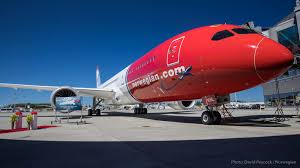Global airline losses due to the coronavirus are set to top $100 billion and leave air traffic at the level of 2006, airline association Iata has warned.
Iata issued revised estimates of aviation’s losses today, forecasting the world’s carriers will collectively lose $84 billion this year and almost $16 billion in 2021.
The association predicted airline revenues would half this year to $419 billion before rising to about $598 billion in 2021, still way below the $838 billion recorded in 2019. It calculated airline losses for the year at an average $37.54 per passenger.
Iata director general Alexandre de Juniac said: “On average, every day this year will add $230 million to industry losses. That is why government financial relief remains crucial.”
However, he added: “Provided there is not a second wave of Covid-19, the worst of the collapse in traffic is likely behind us.
“A key to recovery is universal implementation of the re-start measures agreed through the International Civil Aviation Organisation (ICAO).
“With the help of effective contact tracing, these measures should give governments the confidence to open borders without quarantine measures.”
Iata noted that at its lowest point in April global air traffic was 95% below 2019 levels.
It estimates traffic for the year will be down almost 55% on 2019, with passenger numbers roughly half of last year’s total at 2.25 billion – on a par with 2006.
Passenger revenues are forecast to fall to $241 billion, down from $612 billion in 2019.
Iata expects passenger numbers in 2021 to rebound to 3.38 billion, roughly at the level of 2014.
It reported “costs are not falling as fast as demand”, with total expenses of $517 billion about 35% below 2019 levels when “revenues will see a 50% drop”.
But Iata warned further cost improvements would be limited, pointing out: “Continued virus control measures will limit the gains by reducing aircraft utilisation rates.”
The association also noted: “Global measures agreed for the industry re-start will significantly change operational parameters.
“For example, physical distancing during embarkation/disembarking, more deep cleaning and increased cabin check will all add time to operations which will decrease aircraft utilisation.”
Iata reported: “Cargo is the one bright spot. A severe shortage in cargo capacity due to the unavailability of belly cargo on grounded passenger aircraft is expected to push rates up by some 30% for the year.
“Cargo revenues will reach a near-record $110.8 billion in 2020, up from $102.4 billion in 2019. As a portion of industry revenues, cargo will contribute approximately 26%, up from 12% in 2019.”
De Juniac warned: “Airlines will still be financially fragile in 2021. Passenger revenues will be more than one-third smaller than in 2019, and airlines are expected to lose about $5 for every passenger carried.
“Competition among airlines will no doubt be even more intense. The challenge for 2022 will be turning [the] reduced losses of 2021 into the profits airlines will need to pay off their debts.”
Iata noted: “Airlines entered 2020 in relatively good financial shape. After a decade of profits, debt levels were relatively low at $430 billion, roughly half annual revenues.
“Vital financial relief measures by governments have kept airlines from going bankrupt but have ballooned debt to $550 billion.
“Further relief measures should be focused on helping airlines to generate more working capital and stimulating demand rather than further expanding debt.”


























